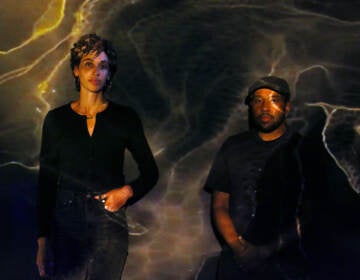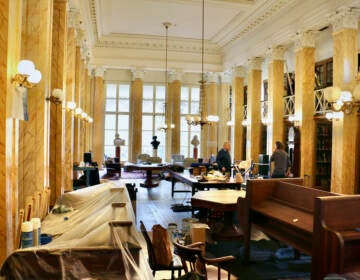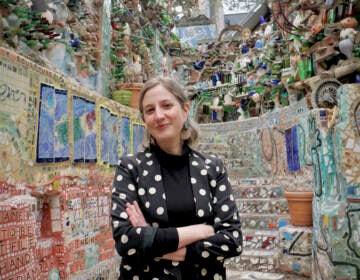Can light-based art improve your health? This Philly exhibition wants to find out
The Jefferson University Center for Immersive Arts for Health is using a gallery exhibition to experiment with ways art can improve medical appointments.
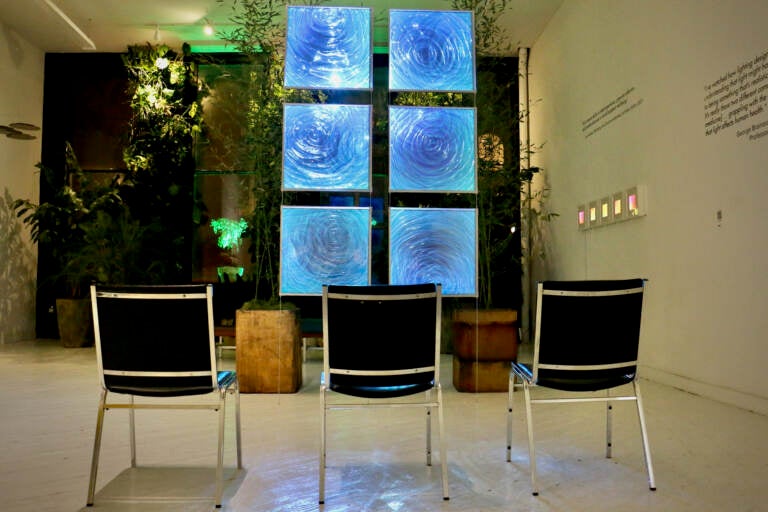
Lyn Godley's ''Light Ripple'' is a centerpiece of Waiting Room, an exhibit at Hot Bed gallery based on the idea that immersive art can improve health outcomes. (Emma Lee/WHYY)
In a darkened space underneath a stairwell at the Hot•Bed gallery in Philadelphia’s Old City, a pulsing mandala of light flickers with pixelated rings of static. The hypnotic piece tricks the brain into believing the wall hanging is actually receding down a tunnel toward a vanishing point.
“Infinite Reflections: Star Tunnel” is a video projection inside two opposing mirrors, creating an illusion of infinity designed by Brooklyn-based light artist Aidan Lincoln Fowler.
He hopes the mesmerizing effect does not just make for compelling video art, but aids people’s well being.
“My work is meant to bring myself and others who view it into the present moment and be extremely engrossed and focused, a desire to escape the anxiety and details of everyday life,” Fowler said in an online video accompanying the exhibition. “Dynamic media puts you in a place where you’re immediately drawn into something because you don’t understand what’s happening.”
Fowler contributed “Star Tunnel” to Waiting Room, a science experiment in the guise of an art exhibition. The show features mostly illuminated pieces involving dynamic use of light, which may play a part in improving health outcomes.
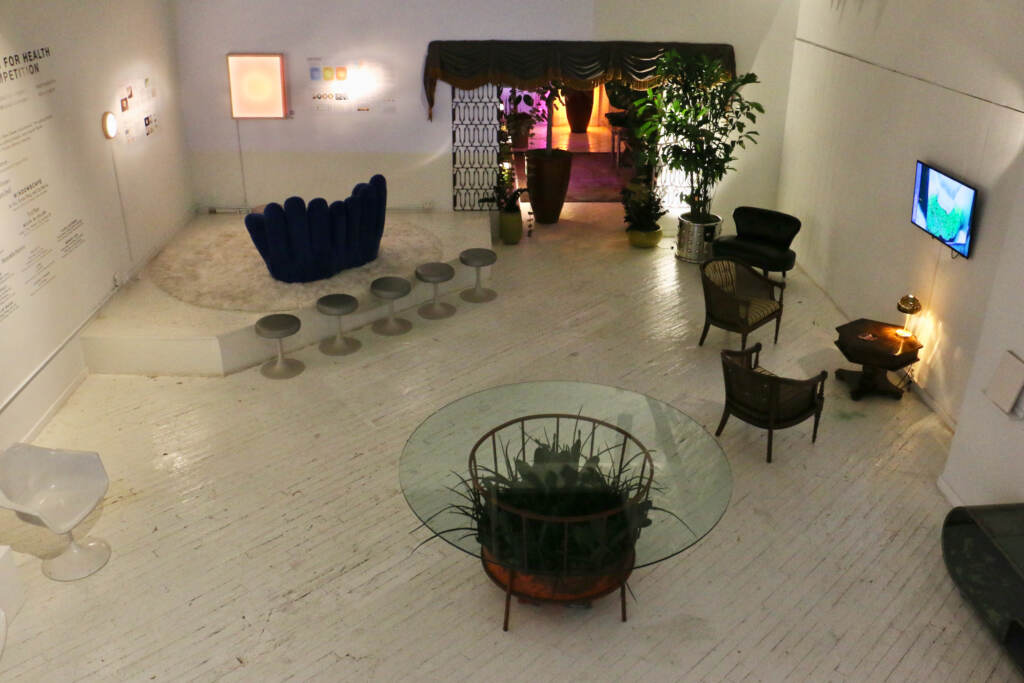
“Waiting Room” is presented by the Center for Immersive Arts for Health, an initiative that began at Jefferson University in 2021 to research how artwork can impact health outcomes. Director and curator Lyn Godley is largely focused on the effects of light perception, in particular light that moves.
“A lot of trials have already taken place around using things such as distraction therapy, where you give someone a VR headset. Just by being engaged in that immersive experience it is making them calmer,” Godley said. “In terms of pain medication, it’s distracting them in a way that a lot of the discomfort that happens in health care is taken off the plate. What we’re trying to do is say, ‘Can we do something similar without a VR headset?’”
The exhibition takes as its starting point the place where most medical interactions begin: the waiting room. It’s a space where anxieties can begin to simmer due to the nature of the visit, and are often exasperated by a television set commonly animating a waiting room.
“God forbid that we have to watch TV or the news while we’re waiting,” Godley said. “Most of our facilities are pretty drab. A great deal of them have charts on the wall, or now they’re playing TVs where they’re actually selling products, like, ‘Look how great you’d be if you got Botox,’ or something.”
More than annoying, badly designed waiting rooms can increase stress, which can impede the success of a visit to a health practitioner.
The pieces in “Waiting Room,” the exhibition, include Godley’s own work. As a practicing artist for more than two decades, much of her work features dynamic use of light. She has three sets of pieces in “Waiting Room” animated by shifting planes of illuminated color.
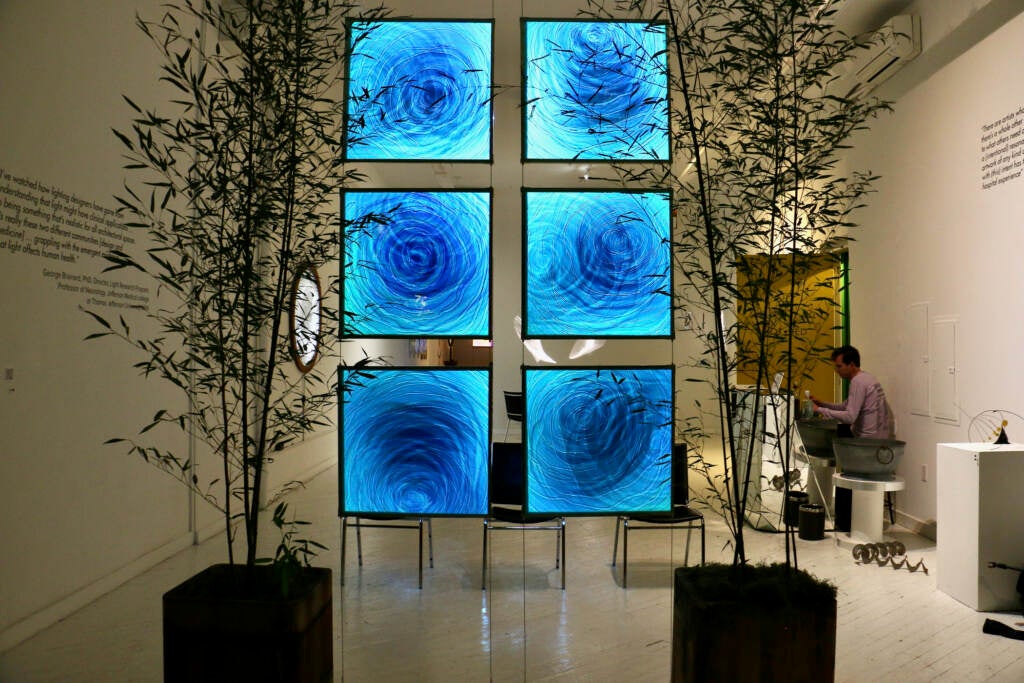
Other pieces include ”Installation” by Jessica Judith Beckwith, which features a room full of pieces of plexiglass shaped into curved sculptures dangling from the ceiling, creating abstract shadow plays of reflected light and shadow on the walls. Philip Hart contributed several mobiles, both desktop and suspended, whose metallic surfaces react to subtle air currents in the room and reflect light onto the walls.
None of the pieces in “Waiting Room” are labeled with wall text; the gallery provides a printed list (with prices) on request. However each piece is accompanied by a QR code on the wall.
This is where the exhibition turns into an experiment: When activated by a cell phone, the code takes viewers to an online survey, asking questions such has how the viewer felt while looking at the piece, how much time they spent looking at it, and if they would like to see it in a doctor’s waiting room.
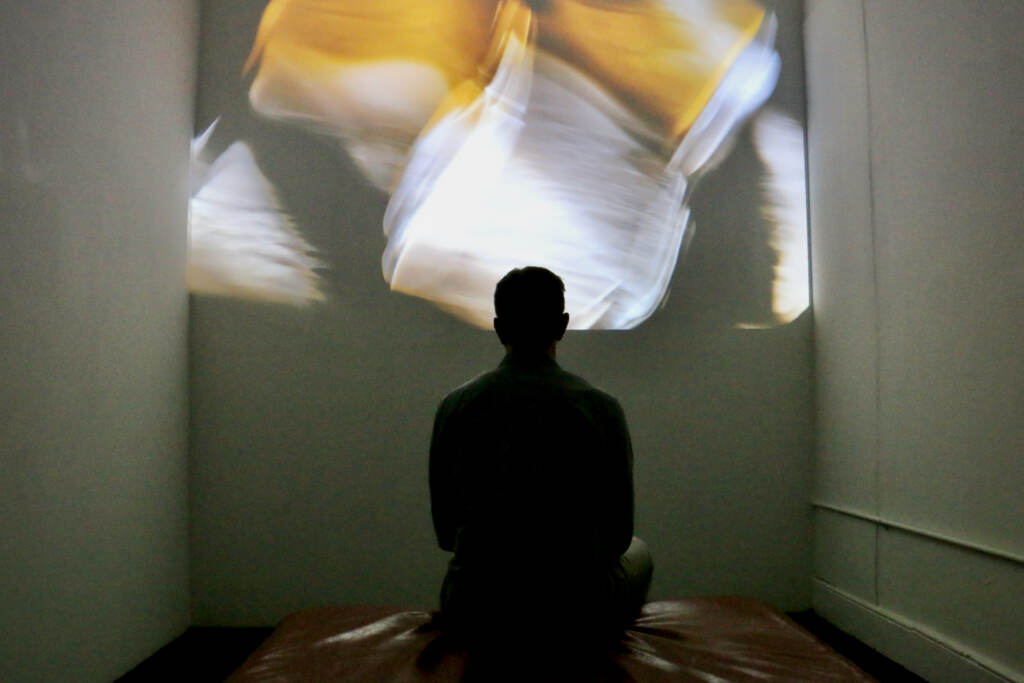
Godley said “Waiting Room” is about collecting data from viewers.
“We’re actually getting feedback, and we’re hoping feedback leads to further research,” said Godley. “It is difficult going after medical research grants where you’re going up against heavy cancer research and say, ‘Well, we think art could help.’ Or having people who are reading those grants understand that when we talk about using light, we’re not talking about just lighting the room.”
Since “Waiting Room” opened in September, Godley said the feedback she has received has been what she hoped it would be, with viewers describing the pieces with words like “peaceful,” “calm,” and “less stressed.”
However, one piece is an outlier: Fowler’s “Star Tunnel.” Viewers do not find it relaxing.
“The words that are coming up for that are panic, stressed out, anxiety,” said Godley.
Those negative reactions may be more scientifically enlightening than the positive.
“You need something that says, ‘No, something doesn’t work,’ for us to start to understand why these things are working,” she said. “That’s been good. I don’t think that the artist thinks that’s good, but, you know, that’s OK.”
“Waiting Room” will be on view at Hot•Bed until Nov. 19.
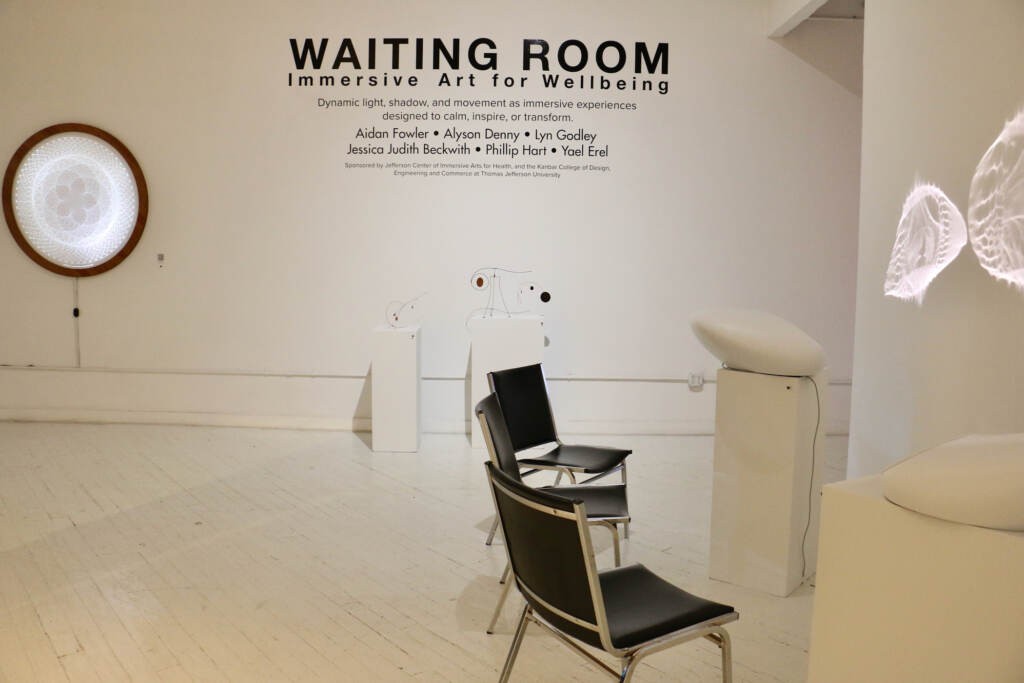
WHYY is your source for fact-based, in-depth journalism and information. As a nonprofit organization, we rely on financial support from readers like you. Please give today.



